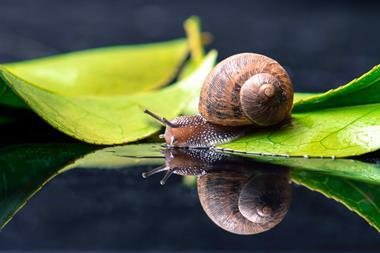Simple molecular interactions may underpin the asymmetry of biological systems
Researchers have found that asymmetries in living organisms can result from a domino effect — from the level of biomolecules all the way up to whole organs and even movement — that’s triggered by a single gene. The discovery sheds light on the origins of asymmetry in biological systems, suggesting that this fundamental property could have evolved simply and quickly.
How organisms acquire asymmetry or chirality – the heart being located on the left side of a person’s body, for example, or the spiralling coil of a snail’s shell – has long puzzled scientists. It’s occurrence at all biological scales has led some to suggest that the phenomenon might be propagated to higher levels by a single asymmetry-determining process at the molecular level. But it has remained an open question.
Stéphane Noselli’s lab at the University of Nice Sophia Antipolis in France had previously identified a gene called Myo1D that is responsible for normal left-right asymmetry in fruit flies. The gene codes for a motor protein called myosin 1D that interacts with actin, another protein that makes up the microfilament network, or cytoskeleton, of cells.
Noselli’s team has now investigated what the minimum biological requirements are for Myo1D to induce left-right asymmetry. By genetically engineering fruit flies to express Myo1D in cells and tissues where it is not normally expressed, the researchers discovered that it generated chirality with no other input.
‘To our surprise, it turned out that Myo1D was sufficient on its own, requiring nothing additional than what is already present in cells or tissues,’ explains Noselli. ‘We realised at this stage that Myo1D was more than a factor necessary for normal left-right asymmetry; in fact, it has a unique chiral determining activity.’
Further experiments revealed that Myo1D induced chirality at all biological levels, demonstrated by elongated cells, spiralling trachea, whole body twisting, and ‘barrel-rolling’ behaviour in fruit fly larvae. Another gene was identified, Myo1C, which induced similar but less pronounced twisting in the opposite direction.
‘It seems that chirality is a fundamental property of biological systems that is rooted to simple molecular interactions and is transmissible,’ Noselli says. ’No other gene so far has been shown to have such powerful activity, from nano to macro scale.’
To better understand the precise mechanism by which myosin 1D induces asymmetry, the team investigated its effects on actin. Lab tests showed that when the two are brought into contact with one another, myosin 1D causes actin filaments to move in circular, anticlockwise motions. Conversely, myosin 1C revealed no turning bias.
‘Such connections have long been suspected, but this study provides perhaps the most complete picture yet of such an “asymmetry cascade” during animal development,’ comments Richard Palmer, who studies asymmetry at the University of Alberta in Canada. ‘It reinforces the belief that subcellular chiral motion may be a key step in the “breaking” of symmetry during development.’
References
G Lebreton et al, Science, 2018, DOI: 10.1126/science.aat8642












No comments yet